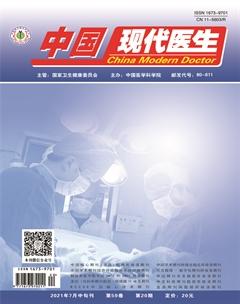经导管主动脉瓣置换术治疗重度高危主动脉瓣狭窄患者的术后护理
林静
[关键词] 经导管主动脉瓣置换术;主动脉瓣狭窄;并发症;超声参数
[中图分类号] R473.6 [文献标识码] B [文章编号] 1673-9701(2021)20-0162-04
Postoperative nursing of patients with severe and high-risk aortic stenosis treated with transcatheter aortic valve replacement
LIN Jing
Department Ⅰ of Cardiovascular Internal Medicine, Ganzhou People′s Hospital in Jiangxi Province, Ganzhou 341000, China
[Abstract] Objective To investigate the postoperative nursing of patients with severe and high-risk aortic stenosis treated with transcatheter aortic valve replacement. Methods A total of 8 patients with severe and high-risk aortic stenosis admitted to our hospital and treated with TAVI from April 2017 to April 2018 were selected as the research objects. After the TAVI operation was completed, the patients were given postoperative nursing, and the nursing efficacies were evaluated. The incidences of adverse events were counted, and the ultrasound parameters of patients at different times before and after operation were compared. Results There were different degrees of adverse events during perioperative period, but there were no other complications such as stroke, death and massive hemorrhage of peripheral blood vessels. Compared with that before operation, Vmax, maxPG, meanPG were decreased significantly, with statistically significant differences(P<0.05), while LVEF was increased significantly, with statistically significant difference(P<0.05). There was no significant change in LVDD compared with that before operation, without statistically significant difference(P>0.05). The patients′ compliance of postoperative nursing intervention was relatively high, and 7 out of 8 patients had better compliance of 87.50%. Conclusion Strengthening nursing care of patients with severe and high-risk aortic stenosis treated with transcatheter aortic valve replacement is helpful to improve the compliance of patients, reduce the incidence of various complications and improve the prognosis efficacy, which is worthy of promotion and application.
[Key words] Transcatheter aortic valve replacement; Aortic valve stenosis; Complication; Ultrasonic parameter
主動脉瓣狭窄发生的主要因素为风湿热后遗症或先天性主动脉瓣结构异常,另外,老年性主动脉钙化也是造成主动脉狭窄的重要因素[1]。其临床表现为心绞痛、晕厥、呼吸困难、心悸等,具有较高的死亡率。目前,针对重度高危主动脉瓣狭窄(Aortic valve stenosis,AS)的主要治疗方式为经导管主动脉瓣置换术(Trans-catheter aortic valve implantation,TAVI),其对患者的创伤较低、术后并发症较少[2]。经导管主动脉瓣置换术是一种新型的介入技术,为高危主动脉瓣狭窄的患者带来希望,尤其是高龄、置换手术风险较高的患者。另外,对严重高危主动脉瓣狭窄患者进行有效的术后护理,在一定程度上提高了治疗的安全性,保证了治疗效果[3]。本研究以进行TAVI治疗的患者为主要研究对象,探讨经导管主动脉瓣置换术治疗重度高危主动脉瓣狭窄患者的术后护理,现报道如下。

